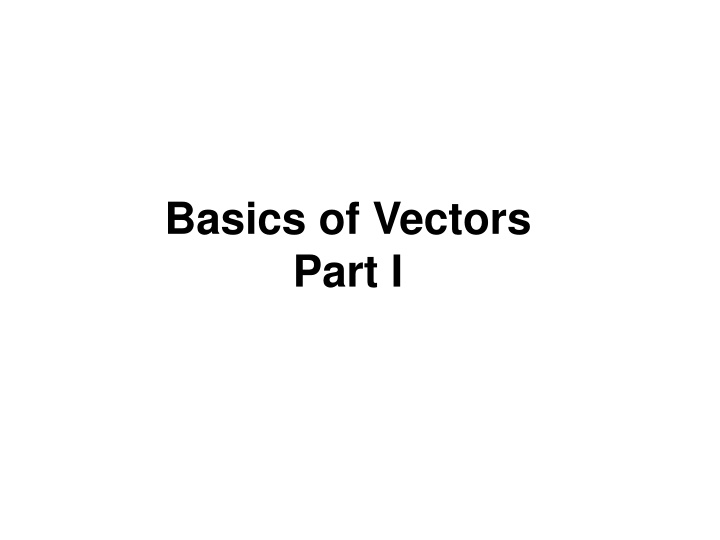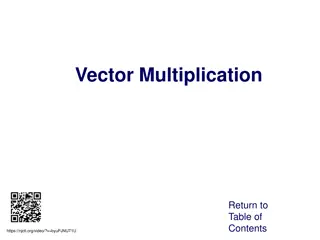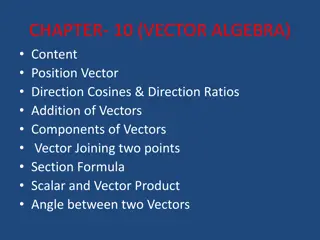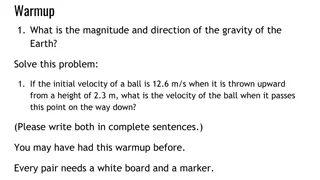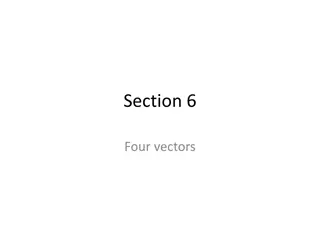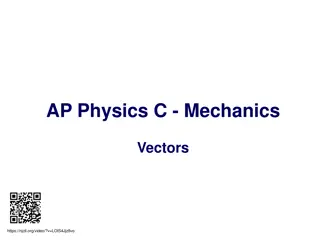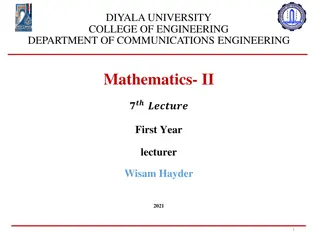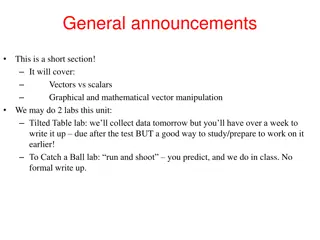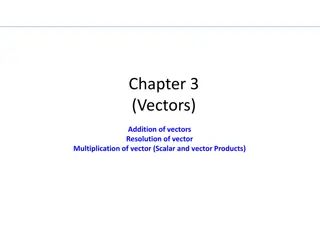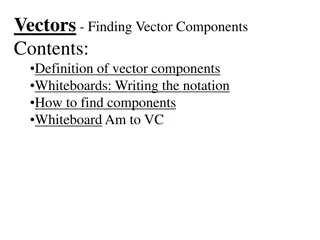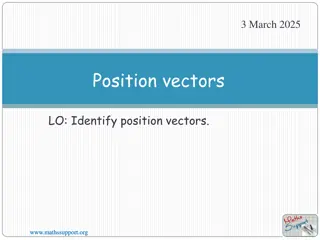Basics of Vectors: Scalars, Vectors, and Unit Vector
Scalar quantities have magnitude only, while vector quantities have both magnitude and direction. Unit vectors have magnitude of 1 and direction. Vector addition and subtraction involve combining vectors component by component. Various rules and laws govern vector algebra.
Download Presentation

Please find below an Image/Link to download the presentation.
The content on the website is provided AS IS for your information and personal use only. It may not be sold, licensed, or shared on other websites without obtaining consent from the author.If you encounter any issues during the download, it is possible that the publisher has removed the file from their server.
You are allowed to download the files provided on this website for personal or commercial use, subject to the condition that they are used lawfully. All files are the property of their respective owners.
The content on the website is provided AS IS for your information and personal use only. It may not be sold, licensed, or shared on other websites without obtaining consent from the author.
E N D
Presentation Transcript
Basics of Vectors Part I
SCALARS AND VECTORS: There are two classes of physical quantities, each with its characteristic properties and an appropriate algebra. Scalar quantities: These have magnitude only and do not involve direction. To specify a scalar quantity completely, it is necessary to know a) a unit of the same kind and b) a number stating how many times the unit is contained in the quantity, i.e. a scalar can be specified by a single number. Example: mass, time, volume, density, temperature, electric potential, charge They are indicated by non-bold face letters, for instance, S .
SCALARS AND VECTORS: Vector quantities: These have both magnitude and direction. To specify a vector quantity completely, it is necessary to know a) a unit of the same kind and b) a number giving the magnitude of quantity in terms of this unit. c) a statement of the direction. Example: velocity, force, displacement, and electric field intensity They are indicated by bold face letters, for instance, V or by a letter with an arrow on top of it, such as ?. Another class of physical quantities is called tensors, of which scalars and vectors are special cases.
UNIT VECTOR: A unit vector ??along ? is defined as a vector whose magnitude is unity (i.e., 1) and its direction is along ?, that is,. ? ? ? ? ??= = Note that ??=1. Thus we may write ? as: ? = ? ?? A vector ? in cartesian (or rectangular) coordinate may be represented as : (??,??,??) ?? ??+ ?? ??+ ?? ?? or ??2+ ??2+ ??2 Magnitude of vector ? is given by: ? =
VECTOR ADDITION AND SUBTRACTION: Two vectors A and B can be added together to give another vector C; that is, C = A + B The vector addition is carried out component by component. Thus, if ? = (??,??,??) and ? = (??,??,??). ? = ??+ ????+ ??+ ????+ ??+ ???? Vector subtraction is similarly carried out as ? = ? ? = ? + ( ?) ? = ?? ????+ ?? ????+ ?? ????
Graphically, vector addition and subtraction are obtained by either the parallelogram rule or the head-to-tail rule as portrayed in Figures 1.2 and 1.3, respectively. FIGURE 1.2 Vector addition C = A + B: (a) parallelogram rule, (b) head-to-tail rule.
FIGURE 1.3 Vector subtraction D = A - B: (a) parallelogram rule, (b) head-to-tail rule.
The three basic laws of algebra obeyed by any given by vectors A, B, and C, are summarized as follows: Law Addition Commutative A + B = B + A Associative A + (B + C) = (A + B) + C Distributive k(A+ B) = kA+ kB where k is scalar.
POSITION VECTOR The position vector??(or radius vector) of point P is as the directed distance from the origin O to P: i.e.. ??= ?? = ???+ ???+ ??? FIGURE 1.4 Illustration of position vector rP = 3ax + 4ay + 5az.
DISTANCE VECTOR The distance vector is the displacement from one point to another. If two points P and Q are given by (??,??,??) and (??,??,??), the distance vector (or separation vector) is the displacement from P to Q as shown in Figure 1.5; that is, ??+ ???= ?? ???= ?? ?? ???= (?? ??)??+ (?? ??) ??+ (?? ??) ?? FIGURE 1.5 Distance vector rPQ.
References 1. M.N. Sadiku, Elements of Electromagnetics, New York: Oxford University Press, 2000.
